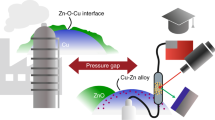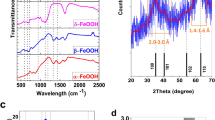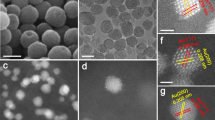Abstract
THE chromium–aluminium oxide catalyst system is one most commonly used in the aromatization of paraffinic hydrocarbons. In practice, mixtures containing up to 20 per cent chromium oxide are used, this being regarded as the region of greatest catalytic activity. The work of Eischens and Selwood1 on this catalyst system established the close relation between the activity, magnetic susceptibility, and state of dispersion of the chromium oxide on the alumina. It was shown that at low chromium oxide content, the chromium oxide aggregates into clusters or islands which build up into two and even three layers in thickness, and which have high magnetic susceptibility and high catalytic activity.
This is a preview of subscription content, access via your institution
Access options
Subscribe to this journal
Receive 51 print issues and online access
$199.00 per year
only $3.90 per issue
Buy this article
- Purchase on Springer Link
- Instant access to full article PDF
Prices may be subject to local taxes which are calculated during checkout
Similar content being viewed by others
References
Eischens, R. P., and Selwood, P. W., J. Amer. Chem. Soc., 70, 2271 (1948).
Hawkins, P. J., and Janz, G. J., J. Chem. Soc., 1485 (1949).
Author information
Authors and Affiliations
Rights and permissions
About this article
Cite this article
JANZ, G., HAWKINS, P. Activity of the Chromium-Aluminium Oxide Catalyst System in the Nitrile-Diene and n-Heptane Cyclizations. Nature 168, 387–388 (1951). https://doi.org/10.1038/168387a0
Published:
Issue Date:
DOI: https://doi.org/10.1038/168387a0
Comments
By submitting a comment you agree to abide by our Terms and Community Guidelines. If you find something abusive or that does not comply with our terms or guidelines please flag it as inappropriate.



